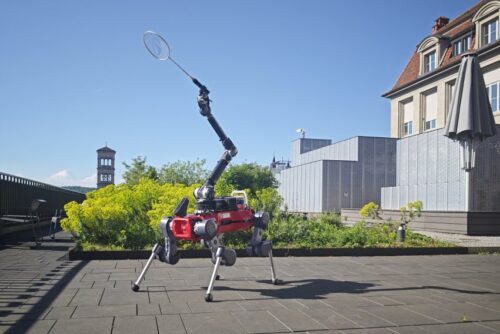The robot with four legs learns to play badminton by watching and mimicking human movements, hitting the shuttlecock, and interacting with people.

A small team of roboticists at the Robotic Systems Lab, ETH Zurich in Switzerland, has developed, built, and tested a four-legged robot capable of playing badminton against human opponents. The researchers employed a reinforcement learning-based controller that enables the robot to track, predict, and react to the shuttlecock’s movements during play. This work showcases the potential for multi-legged robots to participate in fast-paced, dynamic sports environments.
Badminton is a racket sport similar to tennis, with the primary difference being the use of a shuttlecock instead of a tennis ball. The objective remains the same: to hit the shuttlecock over a net towards an opponent positioned on the opposite side of the court. Mastering badminton requires agile footwork to quickly reach the optimal position and precise arm and hand coordination to accurately strike the shuttlecock and send it to a targeted spot. Equipping a robot with these capabilities demanded several specialized adaptations.
The primary adaptation was equipping the robot with four legs instead of the two used by humans. This design provides the robot with significantly greater stability and flexibility in its movements. To enable these capabilities, the researchers outfitted the robot with a stereo camera and a dynamic arm. They also implemented a reinforcement learning–based controller to help the robot position itself effectively and respond accurately to the shuttlecock’s trajectory.
Additionally, the team developed a “perception noise model” that compares real-time camera data with the information gathered during training. This feature allowed the robot to perform human-like badminton actions, such as following through on shots and pitching—tilting its base forward or backwards—to maintain continuous tracking of the shuttlecock.
Testing proved the training successful, as the robot, named ANYmal-D by the team, was able to navigate the court effectively and sustain rallies with human players for up to 10 consecutive shots.
Reference: Yuntao Ma et al, Learning coordinated badminton skills for legged manipulators, Science Robotics (2025). DOI: 10.1126/scirobotics.adu3922







